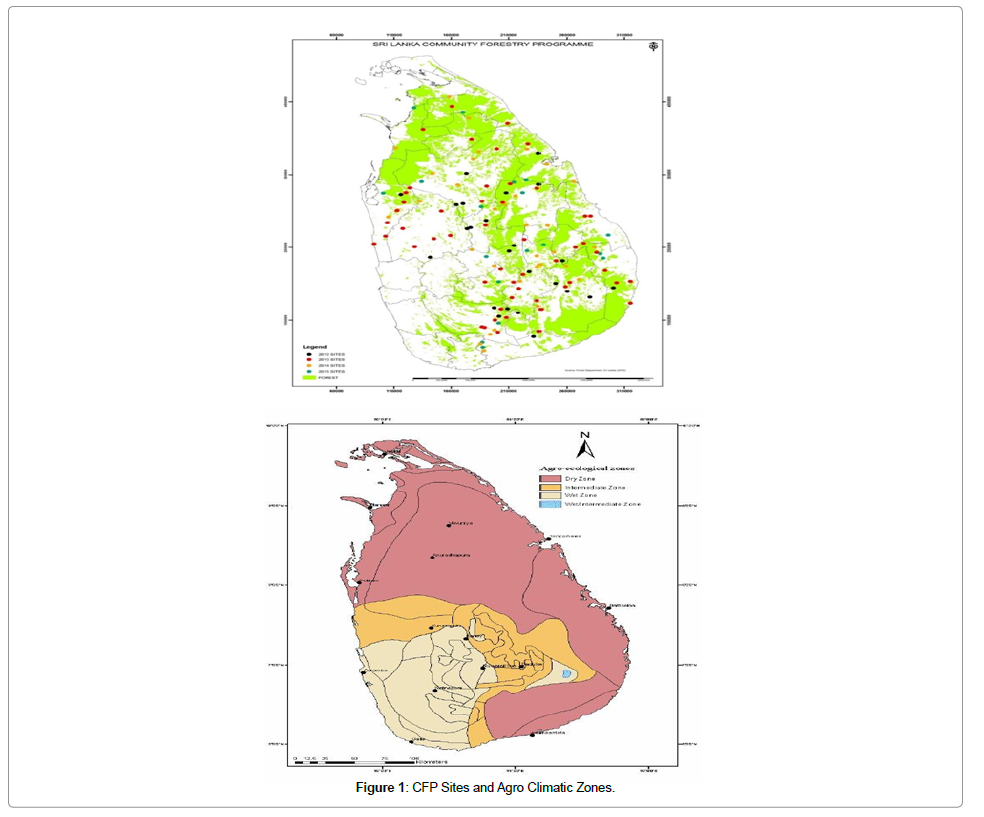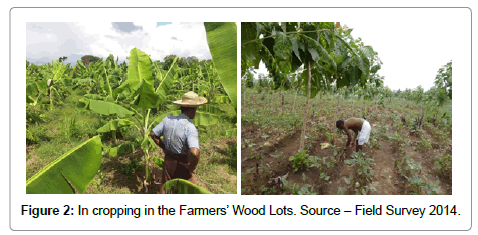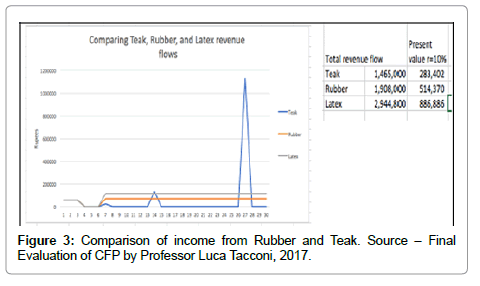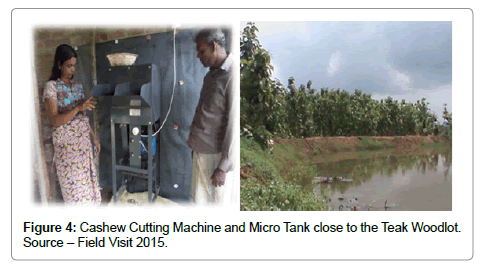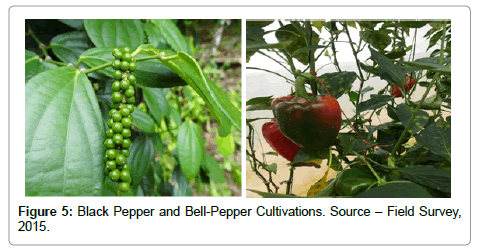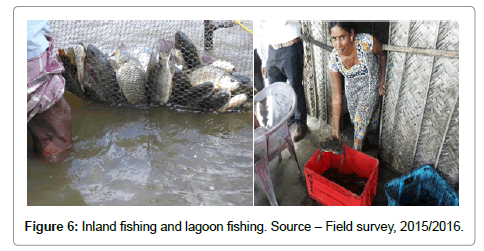Review Article Open Access
Economic Benefits of Sri Lanka Community Forestry Program (SLCFP)
Dunstan Fernando*
Australian High Commission, Colombo, Sri Lanka
- *Corresponding Author:
- Fernando SD
Senior Program Officer
Australian High Commission
Colombo, Sri Lanka
Tel: 0094 77 302 10 95
E-mail: jdun_fernando@yahoo.com
Received date: Feburary 20, 2017; Accepyed date: Feburary 27, 2017; Published date: March 02, 2017
Citation: Fernando D (2017) Economic Benefits of Sri Lanka Community Forestry Program (SLCFP). J Ecosys Ecograph 7:247. doi: 10.4172/2157-7625.1000247
Copyright: © 2017 Fernando D. This is an open-access article distributed under the terms of the Creative Commons Attribution License, which permits unrestricted use, distribution, and reproduction in any medium, provided the original author and source are credited.
Visit for more related articles at Journal of Ecosystem & Ecography
Abstract
The Sri Lanka Community Forestry Program (SLCFP) commenced in 2012 and was completed in December 2016. The program design was based on the ‘Strategy for Community Forestry Management’ developed by the Forest Department (FD) in 2008. The community forestry approach is well established in Sri Lanka and agrees with Government of Sri Lanka (GoSL) environmental and economic development strategies for the country. Rural communities also accepted the community forestry concept as it provides various benefits including increased forest cover, increased income and livelihood support.
Keywords
Livelihood; Gender equality; Microfinance (MF); Functional Resource Unit (FRU); Farmers’ Wood Lots (FWLs); Enrichments; Buffer zone; Community Based Organisations (CBOs)
Purpose of the Study
This study aims to investigate the economic incentives offered to communities living in adjacent forests to promote their involvement in sustainable Forest Management under the Sri Lanka Community Forestry Program (SLCFP). The investigations were carried out in a number of forest communities to cover CFP sites spread within 18 districts of the country. However, this stage is too early to review the full-scale economic analysis of CFP as most plantings and economic activities are still in early stages. As such, this study examines the benefits offered to communities at the current stage.
Methodology Used for the Study
The case study methodology has been used to study the economic benefits offered by the program. More than 15 districts were covered and met forestry extension officers, CBO members and small farmers in successful, moderate and weak sites [1]. The process used was participatory and following tools have been used to collect data and information.
• Desk review of relevant program documents and reports;
• Discussions with farmers, environmental officials and key stakeholders;
• Consultation with district and range forest officers and extension officers;
• Site inspection with forest officers and communities; and
• Other PRA programs to calculate economic benefits for communities.
Sri Lanka Community Forestry Program (SLCFP)
The Sri Lanka Community Forestry Project (SLCFP) commenced to consolidate the forestry development activities implemented by the Sri Lanka Australia Natural Resource Management Project (SLANRMP) which was implemented as a pilot program from 2003 to 2009 [2]. The goal of SLCFP is to improve the management of natural resources to support livelihoods and contribute to poverty reduction in the dry and intermediate zones of Sri Lanka. In addition, program has focused on new areas based on the experience gained by previous interventions. Accordingly, gender, sociological and livelihood aspects were considered as important areas to address through the program.
The program has been implemented in 18 administrative districts benefiting 167 forest communities (approximately 125,000 individuals) across 167 sites (Figure 1). Nearly 23,500 hectares of forests were managed through Farmer’s Wood Lots, Buffer Zone Planting and enrichment of catchments and home gardens [3].
Community involvement in Forest Management
The analytical studies done on the Sri Lanka Australia Natural Resource Management Project (SLANRMP 2004 to 2009) proved that ‘Community Forestry’ (CF) is the most cost-effective and successful approach for reforestation1. Community involvement is the foundation for the success in reduction of deforestation and forest degradation. Participation of communities mainly based on the benefits available or offered for dependent communities. ‘The perceived benefits of access to financial resources, community development, and forest improvements change people’s behavior and attitudes toward, and understanding of CF programs and this leads to increased participation [4]. The modern community forestry program includes many components to attract or increase peoples’ participation. Accordingly, site specific Forest Management Plans were prepared including reforestation, home garden development, microfinance, micro enterprise development, gender equality, minor infrastructure (access roads, minor irrigation etc.) and other socio-economic benefits. Some benefits spread beyond CF membership and are common to all families living in and around the Functional Resource Unit (RFU)2. Improved access roads and minor irrigation are the best examples in this regard. It was observed that CBOs developed their own CF models suit to their environmental conditions and other socio-economic requirements. Thereby farmers were successful in increasing their income through intercropping (in FWLs) and micro enterprises. The performances of such successful sites directly influenced the other program sites and CBOs for better results. ‘The empirical evidence shows that the level of participation in CF activities is determined by the socioeconomic characteristics of forest users and the benefits obtained from the forest resources they are managing.
On the other hand, the main challenge face by foresters is to promote active and continuous community involvement in sustainable Forest Management. The modern foresters correctly identified this issue and make arrangements to address through the community forestry concept [5]. When they develop management plans for selected forest area, socio-economic development and livelihood improvement of communities were also prioritized same as forestry activities. Nearly 60% of the site development cost covers the requirements of forest and forest resources. Balance 40% allocates for socioeconomic development and livelihood development activities of communities. Grassroots level foresters have the freedom and flexibility to introduce different income generating activities and livelihood development programs suitable for the locality. Benefits derived from the program could be discussed under two main categories namely direct and indirect economic benefits.
Direct Economic Benefits
Direct payments to farmers by Forest Department (FD)
The initial direct economic benefit is the financial payments of FD on the works done by community members. Land clearing, planting and maintenance of plants is the main forestry works done by farmer families. Farmers are entitled to claim for these works and payments are being done according to FD norms [6]. The average rate per day per person is Rs 700.00 (US$ 6). In most cases, bulk payments are done to CBO bank account and CBO releases money to individual famers on a pay-roll system. The general practice is that farmers do not withdraw the full amount from CBO and keep a small amount as compulsory savings. The current savings of CBOs vary from Rs. 30,000 (US$ 260) to Rs. 300,000 (US$ 2,600). These savings are being used by CBOs to provide micro loans for their members at a reasonable interest rate from 1% to 4% per month. (The outside interest rate is around 10-20% per month). The loan amount also varies from Rs. 5,000 (US$ 43) to Rs. 50,000 (US$ 435) depending on the requirement and the proposed enterprise.
Economic benefits through Farmers’ Wood Lots (FWLs)
The FWL is the most popular component in the community forestry program. Under this, farmers will have the ownership of FWL and enter in to a contract with FD agreeing to improve and maintain the forest resources in FWLs. The average extent of a FWL varies from 0.5 hectares to 2.0 hectares.
Farmers grow permanent trees like Teak (Tectona grandis), Kaya and Neem (Azadirachta indica) to sell as timber. These plants are common in North Western, Eastern and North Central provinces. However, farmers in hill country, Sabaragamuwa and Uva provinces have rejected these trees and cultivated local species such as Pihimbiya (Filicium decipiens); Kumbuk (Terminalia arjuna); Welan (Pterospernum canascens); Kahata (Careya arborea); Jak fruit (Artocarpus heterophyllus); Kudu Davula (Neolitsea cassia); Maila (Bauhinia recemosa); Damba (Calophyllum inophyllum); Mee (Madhuca longifolia); Halmilla (Berrya cordifolia); Aralu (Terminalia chebula); Bulu (Terminalia bellirica); Nelli (Phyllanthus emblica); Keta kella (Bridelia retusa); Keena (Calophyllum tomentosum); Siyambala (Tamarindus indica); Weralu (Elaeocarpus serratus) suitable to their environment and socio-economic requirements. The previous chena (slash and burn) lands have been converted as Farmers Wood Lots (FWLs) and farmers are proud to have wood lots as they received the legal ownership to cultivate perennial crops [7]. This is really a ‘land reform’ process focusing on land and tree cover improvement. Farmers collect income through pruning and thinning of trees before the maturity of forest trees. After 25 years of full cultivation cycle, farmers could sell their trees and 80% of the income could keep by farmers. Balance 20% should pay to the government as ‘Royalty’. Accordingly, a farmer could earn more than a million rupees through selling of logs at the farm-gate price. (E.g., Rs. 5,000 (US$ 44) per tree × 200 trees). In addition, intercropping is also being done by farmers during first 3 to 4 years. Finger millet, cowpea, soya, maize, and chilies are the favourite crops under agro-forestry. The average income from intercropping is more than Rs. 100,000 (US$ 870) per crop. (E.g., Kadira in Dambulla, Kumari in Ampara and Wijedasa in Rathnapura). Farmers cultivated rubber in their FWL in Kokagala (Ampara) and Katupalalla (Moneragala) sites (Figure 2). Farmers in katupalalla started collecting latex from their rubber trees and they have a small workshop with required chemicals and a roller machine. The average income at the beginning of rubber sheets making is around Rs. 10,000 (US $ 90) per month. D M Sirisena in Katupalalla has earned Rs 12,000 (US$ 104) during November 2016 by selling of rubber sheets to a local company.
However, FWLs planted with teak (at the current tree density) allow farmers to intercrop for just three years. Then, they need to wait nearly 25 years until they receive further significant benefits, apart from the limited benefits derived from pruning and thinning around year 7 and year 14 [8]. Farmers in the intermediate zone that had planted rubber in FWLs rather than teak appeared to be more satisfied with the FWLs as they realize that a more regular income (from rubber tapping) can be derived just a year or so after they stopped intercropping. (Please refer Figure 3). Famers in the dry zone are poorer than those in the intermediate zone but the current planting patterns penalize the former in terms of income flow (Figure 3). Therefore, consideration would need to be given to modifying the planting density of teak woodlots to allow much longer intercropping of annual corps, and including a mix of tree species that generate more regular income, such as fruits and nuts, in addition to the timber which harvested after 25-30 years from planting.
Economic benefits through enrichment and buffer-zone planting
The enrichment planting has been launched to enrich the existing and degraded forest reserves. At the beginning of the program, the CFP implementers have done a review to study the quality of trees within forest reserves. Valuable trees like ebony, satin and jack were removed by illegal timber fellers. Replanting of such trees is a must to re-enrich degraded forest reserves. Under the CFP, FD has encouraged CBO members to improve the existing forest reserves through replanting, protecting and maintaining of reserves. The enrichment program has many goals [9]. Increased forest cover and improved biodiversity are the main aims of this activity. Secondly, availability of food and fruits for human and animals is also necessary in the forest areas. If sufficient food and fruits are available within the forest, damages for home gardens and crops by wild animals could be reduced. At the same time, food and fruits like mango (Mangifera indica), wood apple (Limonia acidissima), galsiyambala (Dialium ovoideum) could be consumed by communities as well. But it is hard to measure the economic values of such benefits at this moment due to lack of information available on survival rate etc. It was also observed that farmer participation in this component is low and action should be taken to increase the participation with appropriate financial and economic benefits. Modification or fresh models should be developed to replace the current enrichment component.
However, Cashew and black pepper in some forest reserves and buffer zones provide huge benefits to communities. Aludeniyaya in Kurunegala district is a successful site with enrichments, buffer zone development, home gardens and agro-based micro enterprises. Cashew trees are available in the forest and farmers earn a good income from collecting and selling of cashew nuts. (Mostly women groups go to forest reserve to collect cashew nuts). Initially, farmers sold raw cashew and the market price was very low for raw cashew. Recently, CBO has purchased a cashew cutting and processing machine and now they sell processed cashew nuts at a higher price for different markets. In the past, famer income from cashew was around Rs. 8,000 (US$ 70) per collection. During that period they sold raw cashew at the rate of Rs. 200.00 (US$1.8) a Kilo. But the current selling price of processed cashew is around Rs. 1,800 (US$ 16) a kilo. Now they earn more than Rs. 25,000 (US$ 217) per collection by a person (Figure 4). The Aludeniya CBO is an active society and they have more than Rs. 120,000 (US$ 1,043) savings in the CBO account.
Paddy and Agri-products
A number of minor irrigation (tanks, ponds and anicuts) were renovated under the project funds to provide additional support to small farmers. (Eg. Mahahenyaya in Puttalam and Irigeoya in Polonnaruwa). This will enhance the benefits to communities as they could cultivate paddy during Maha3 and Other Field Crops (OFC) during the Yala4. Tank renovation is ideal to show project impacts in the long run as it is more relevant to reduce community pressure on forest and its resources. Prior to the tank renovation, farmers managed to harvest only 60 bushels5 per acre under the rain-fed conditions. With the tank water, paddy harvest has been increased up to 110 bushels per acre. The total income under rain-fed cultivation was around Rs. 50,400 (60 bushels × 28 × Rs. 30 per kilo) - US$ 438. Now the farmer income is almost double due to irrigation facilities and they earn Rs. 92,000 (US$ 800) from the same paddy cultivation plot.
Asamodagam (Trachyspermum involucratum) cultivation
It is also noted that there are a number of viable enterprises and cultivations available in several sites. Black pepper, Been, Banana, Asamodagam, Goraka (Garcinia gummi-gutta) and Cinnamon are the lucrative agri-businesses operating in CFP sites. The following Table 1 illustrates the additional income received by CBO members from Asamodagam cultivation at Andoluwa site in Rathnapura.
| Income received | No of farmers |
|---|---|
| More than Rs. 100,000 | 2 farmers |
| Between Rs. 50,000 and Rs. 100,000. | 19 farmers |
| Between Rs. 40,000 and Rs. 50,000. | 4 farmers |
Table 1: Income from Asamodagam cultivation.
Black pepper and Bell-pepper cultivation
Black Pepper is a minor export crop and it could be exported as a high value product. Even at the village level, pepper cultivation is highly profitable and around Rs. 700,000 (US$ 6,087) could be earned from a single harvest. Farmers were encouraged to cultivate pepper in FWLs and Buffer zones as well. CFP farmers in Moneragala (Katupalalla) and Rathnapura have started first harvesting under the CFP and they expect more than Rs. 500,000 (US$ 4,348) income from raw (green) pepper.
Bell-pepper cultivation is popular in the hill country (E.g., Wngekumbura site in Welimada). Funds allocated for livelihood were given to farmers as loans to promote Bell-pepper cultivation. Project funds mainly used to build green houses and seeds for the cultivation (Figure 5). The average income for a cultivator is around Rs. 80,000 (US$ 696) per crop. During festival seasons like Christmas and New Year they earn more than Rs. 100000 (US$ 870) per crop as demand and prices are high in the market.
Inland fishing and lagoon fishing
Fresh water fish has been introduced in several tanks including Mahaulthgamara in Hambantota and Ulpothwewa in Kurunegala. Financially it was a lucrative business venture and initial capital cost is low. It is also important to provide nutrition food to village kids and program should encourage them to continue with this activity if they have sufficient water in tanks [10]. After six months of the breeding, farmers could harvest nearly Rs 6,000 (US$ 52) worth of fish from a tank (Figure 6). Farmers in Mannar engage in lagoon fishing and they harvest crabs and prawns which were expensive in the market.
Other livelihood development programs
Most families who involved in CFP have improved their income levels and livelihoods with the incentives offered by SLCFP and the Government (Table 2). Program also supported unemployed youth and women to engage in income generating activities. The key Income Generating Programs (IGPs) introduced by the community forestry program includes following:
| Industry/livelihood activity type | Beneficiaries | Income Rs/month | |
|---|---|---|---|
| Female | Male | ||
| Livestock development | 563 | 399 | 168,900 |
| Bee keeping | 169 | 251 | 74,500 |
| Handicraft | 56 | 5 | 75,000 |
| Compost production | 30 | 34 | NA |
| Rice flour products | 26 | 4 | 19,000 |
| Vegetable cultivation | 171 | 152 | 30,000 |
| Tailoring | 262 | 6 | 244,500 |
| Soap production | 10 | 4 | 12,000 |
| Mushroom cultivation | 150 | 67 | NA |
| Pepper cultivation | 130 | 135 | 500,000 |
| Food processing | 131 | 49 | NA |
| Indigenous food | 4 | 2 | 54,000 |
| Floriculture | 90 | 30 | 181,000 |
| Bag production | 48 | 47,000 | |
| Fruit juice production | 2 | - | 51,500 |
| Small industries | 37 | 16 | 18,000 |
| Lacquer work | 1 | 3 | 6,000 |
| Jaggary production | 28 | -- | 136,000 |
| Sweet production | 69 | 11 | 33,500 |
| Grinding mill | 2 | 2 | NA |
| Big Onion cultivation | 5 | 75,000 | |
| Broom manufacture | 57 | 18 | 5,000 |
| Carpentry | 1 | 810,000 | |
| Ginger cultivation | 55 | 47 | 40,000 |
| Betel cultivation | 65 | 81 | 27,000 |
Source – Annual Report, SLCFP - 2015
Table 2: Current livelihood activities.
Indirect Economic Benefits
The community forestry concept is widely recognized and accepted by government agencies, communities as well as NGOs. Progress of the program encourages government agencies and NGOs to join and facilitate development of infrastructure and soft skills of communities. These activities could be introduced as indirect benefits by NGOs and other service providers.
Mini hydropower project for Baduludene community
The CBO in Baduludena is another active Organisation and developed relationships with many government and non-governmental agencies. A private company approached this village and established two mini hydro power plants. The capacity of the middle size plant is MW 2.2 and generated power links to the main grid. The small plant capacity is KW 20 and especially established to provide electricity to communities in Baduludena. This capacity is sufficient to provide electricity to the entire village. The infrastructure expenditure is born by the private company and villagers pay Rs. 500 flat rate per month as electricity bills. This is a remarkable achievement by the remote community to upgrade the living conditions of members. School kids and women are the main beneficiaries of this facility.
Village access roads and agricultural roads
Poor access road network is the main barrier for small farmers to transport their products to nearby markets. Communities in Matale, Ampara, Badulla and Moneragala face this issue due to the difficult land terrain. Rocks and steep slopes prevent community to develop their footpaths. Some CBOs used CFP funds to develop most difficult sections of footpaths in Badulla and Moneragala districts (E.g,. Baduludena, Sadinnawela and Katupalalla sites). But the available funds in project budgets are not sufficient to construct or repair the entire length of roads. Some roads in Matale and Ampara were repaired by the Maga Naguma (Government road development) program and the local government bodies (Pradeshiya Sabhas).
Multiple incomes through NTFP
A number of Non-Timber Forest Products (NTFPs) are available in CFP sites. Medicinal plants, fruits and vegetables are the important NTFPs available in forest reserves. Bim Komba (Munronia pinnata), Aralu (Terminalia chebula),. Bulu (Terminalia bellirica), Nelli (Phyllanthus emblica); are the popular medicinal herbs. Different varieties of vegetables and fruits such as green leaves, wood apple (Limonia acidissima), galsiyambala (Dialium ovoideum), palu (Manilkara hexandra), weera (Drypetes sepiaria) are also freely available in the forest. These are chemical free and contain with nutritious value as well. Modern scientists argue that water also should be considered as a forest product or a NTFP [11]. It is difficult to provide a commercial value for these products. Forest cover also helps to improve the quality of water in the natural streams. However, still communities use destructive methods to harvest some fruits like galsiyambala, weera and Palu.
Improved biodiversity
The environmental benefits are rarely included in economic analyses due to the difficulty in quantifying and/or valuing the impacts. CFP generates a range of environmental benefits to localities and communities as indicated below.
• Reduction in forest fire and increased forest cover in the cascade;
• A reduction in the destructive cultivation methods such as chena;
• Reduction of run-off;
• Soil conservation measures in up-stream and the downstream;
• Reduction of tank siltation; and
• Improved biodiversity.
Research conducted in the Upper Mahaweli catchment in 1992 estimated the quantity of soil erosion between 0.3 and 1.0 tons per hectare per year in dense natural forest, compared to 10 tons per hectare per year in degraded natural forest6.
The biodiversity monitoring done by Forest Department shows that cascade and forest degradation is decreasing and forest cover is increasing slowly with CFP intervention. Generally the regeneration of forest cover is very slow and takes a number of years to recover from damages. During this recovery, ecology in the area also will change or improve. Now there is no scarcity of water in rehabilitated locations. Down-stream farmers receive sufficient water for their crops including paddy. The wet climate attracts wild animals and now monkeys, snakes, deer, elk, peacocks and birds came back to the cascade. Accordingly, ecological balance is gradually improving in reforested areas. Table 3 illustrates the degraded pattern after project intervention. Accordingly, critically degraded areas reduced from 26 in 2014 to 18 in 2016. Highly degraded areas reduced from 18 in 2014 to 16 in 2016. On the other hand Moderate degraded areas increased from 2 in 2014 to 8 in 2016 (Table 3). The reduction of critically and highly degraded areas resulted in increase of low and moderate degraded areas.
| Permanent Sample Sites | Changes in Degradation levels – 2014 to 2016 | |||||||
|---|---|---|---|---|---|---|---|---|
| Status of Degradation | Critically Degraded | Highly Degraded | Moderate Degradation | Low Degradation | ||||
| Year | 2014 | 2016 | 2014 | 2016 | 2014 | 2016 | 2014 | 2016 |
| Change pattern in 46 plots | 26 | 18 | 18 | 16 | 2 | 8 | --- | 4 |
Table 3: Changing pattern of degraded levels with the project intervention.
Carbon storage in reforested areas
Young and healthy forest are good carbon sinks and carbon cycle clear identification of community needs and the environmental gaps. Community Forestry requirements differ from community to community and location wise as well. Recognition of needs and gaps should be done through well-planed PRA practices and results should priorities in Forestry Management Plans. It was noted that livelihoods of communities living in vulnerable locations depend on the forest and forest resources. A more diverse forest is the base for better socioeconomic and socio-cultural improvements of rural communities. Our investigations revealed that community forestry is successful in addressing those needs. The only requirement is to train and educate communities and extension officers on proposed or planned community forestry strategies and activities before its implementation. A strong and effective awareness is the solid foundation for any development work. The current community forestry program is accepted by communities as it is agree with their socio-economic requirements and agricultural life pattern. The Community Forestry Program has laid a strong foundation to consolidate the community forestry strategy with diverse and improved livelihood opportunities. It is also noted that this community forestry model is unique to Sri Lanka and different from other regional countries.
1Steve Hunt was the Manager of SLANRMP from 2003 to 2009
2FRU is the total area benefited by CFP activities.
3Maha is the major rainy and cultivation season in Sri Lanka
4Yala is the minor cultivation season in Sri Lanka
5One bushel is around 28 kilos
6Stocking MA (1992) Soil Erosion in the Upper Mahaweli Catchment, Sri Lanka. Environment and Forestry Division, Mahaweli Authority of Sri Lanka. Quoted in Bandaratil lake, 1996.
References
- Acharya KP, Gentle P (2006) Improving the effectiveness of collective action: Sharing experiences from Community Forestry in Nepal. CGIAR System wide Programme on Collective Action and Property Rights (CAPRi), working paper No. 54.
- Adhikari JR (2001) Community based natural resource management in Nepal with reference to community forest: A gender perspective. J Env 6: 9-22.
- Gender Study on SLCFP (2015) Forest Department, Colombo.
- Field Monitoring Reports (2013 to 2015), Sri Lanka Community Forestry Project.
- Steve H (2008) Project Completion Report of Sri Lanka Australia Natural Resource Management Project. Colombo.
- Independent Completion Report (2008) Sri Lanka ? Australia Natural Resources Management Project. Colombo.
- Independent Completion Report – February 2017, Sri Lanka Community Forestry Project.
- Mid Term Review Report (2014) Sri Lanka Community Forestry Project.
- Livelihood Development under SLCFP (2016) Forest Department, Colombo.
- Project Design Document, November (2011) Sri Lanka Community Forestry Project. Colombo.
- Sri Lanka Forestry Sector Master Plan (1995) Ministry of Agriculture, Lands and Forestry.
Relevant Topics
- Aquatic Ecosystems
- Biodiversity
- Conservation Biology
- Coral Reef Ecology
- Distribution Aggregation
- Ecology and Migration of Animal
- Ecosystem Service
- Ecosystem-Level Measuring
- Endangered Species
- Environmental Tourism
- Forest Biome
- Lake Circulation
- Leaf Morphology
- Marine Conservation
- Marine Ecosystems
- Phytoplankton Abundance
- Population Dyanamics
- Semiarid Ecosystem Soil Properties
- Spatial Distribution
- Species Composition
- Species Rarity
- Sustainability Dynamics
- Sustainable Forest Management
- Tropical Aquaculture
- Tropical Ecosystems
Recommended Journals
Article Tools
Article Usage
- Total views: 7913
- [From(publication date):
December-2017 - Sep 04, 2025] - Breakdown by view type
- HTML page views : 6935
- PDF downloads : 978

